Luteinizing Hormone Test: What Is the Normal LH Level for Fertility?
Fertility Treatment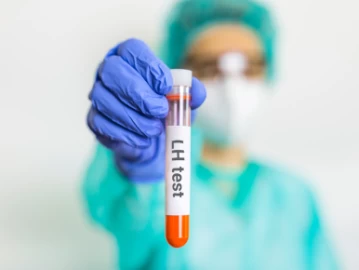
Luteinizing Hormone (LH) is essential for the formation and proper functioning of the reproductive organs. In women, LH helps to trigger ovulation and release an egg from the ovaries. In men, LH stimulates the production of testosterone in the testes.
The LH test measures the amount of LH hormone in the blood or urine and can help diagnose issues related to the reproductive system. In women, abnormal levels of LH may indicate conditions such as polycystic ovary syndrome or premature ovarian failure. In men, abnormal levels of LH may be associated with conditions such as male-factor infertility or male hypogonadism. Therefore, you should know LH's normal range before trying to conceive.
This article provides an overview of LH tests, normal LH levels in females and males, and how to interpret the LH test results.
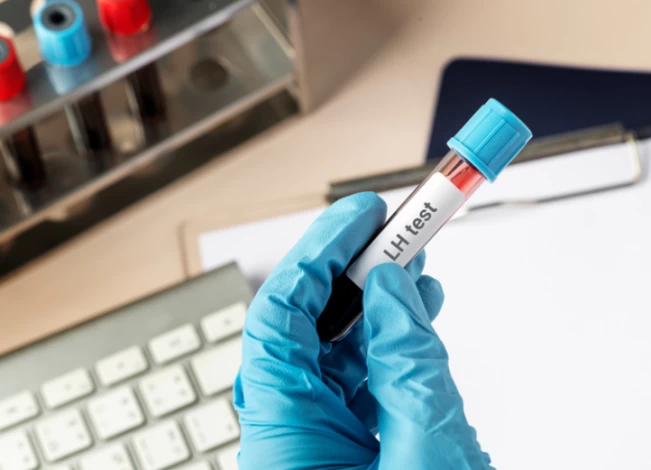
What Is Luteinizing Hormone (LH)?
Luteinizing Hormone (LH) is a gonadotropin hormone produced in the pituitary gland. In women, LH levels rise and fall throughout the menstrual cycle, with a surge in LH triggering ovulation. In females, LH typically soars during the mid-follicular phase of the menstrual cycle (day 14 in a 28-day menstrual cycle), causing the mature egg to be released from the ovary. After ovulation, LH levels decrease and remain low until the next menstrual cycle begins.
It is important to note that LH (Luteinizing Hormone) and Follicle-stimulating hormone (FSH) fluctuate throughout each menstrual cycle.
How to Prepare for the LH Test?
Before taking the LH test, avoid taking medications that may impact your test results. This includes blood thinners, dietary supplements, and hormonal medications. Also, smoking and drinking should be avoided for at least two weeks before the test. Radioactive and chemical substances can interfere with test results, so you must avoid them 15 days before the blood work. If you accidentally encounter them, let your doctor know. Moreover, the LH test is taken with an empty stomach; therefore, avoid eating and drinking 8 hours before the test.
How Luteinizing Hormone Test is Done?
There are two methods for measuring LH levels: blood test or urinalysis. However, if this test is prescribed during pregnancy, multiple tests are needed to detect the cause of fluctuations in luteinizing hormone (LH).
On the other hand, doctors can assess the body's response and determine if there are any abnormalities in the regulation of LH production by administering a gonadotropin-releasing hormone (GnRH) antagonist.
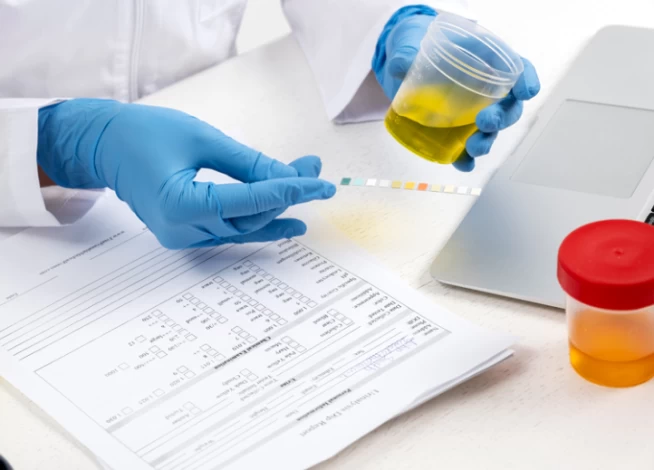
What Is the Normal Level of LH Test?
LH normal range can vary depending on different factors such as the patient's age, health, the timing of the menstrual cycle, and the laboratory.
LH test results are according to international units per milliliter (IU/mL), as follows:
- Pregnant Women: > 1.5 IU/L
- Women at the peak of the menstrual cycle: 8.7 to 76.3 IU/L
- Women in the follicular phase of the menstrual cycle: 1.9 to 12.5 IU/L
- Women using contraceptives: 0.7 to 5.6 IU/L
- Women past menopause: 15.9 to 54.0 IU/L
- Men between the ages of 20 and 70: 0.7 to 7.9 IU/L
- Men over 70: 3.1 to 34.0 IU/L
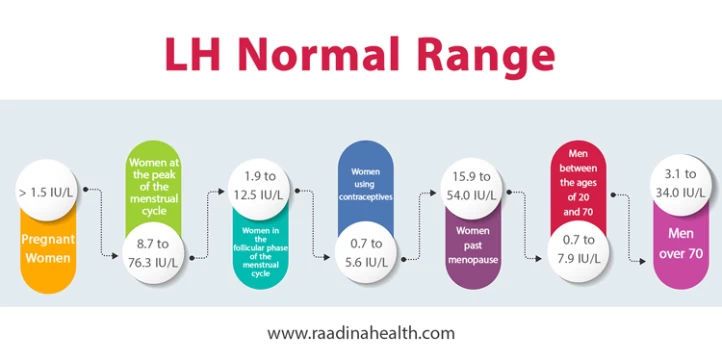
How to Interpret the Results of an LH Test in Women?
Luteinizing hormone (LH) is a vital hormone for the reproductive system in women, playing a key role in regulating the menstrual cycle and supporting fertility. As mentioned, LH levels change depending on the time in the menstrual cycle. Normal LH levels in females are as follows:
- 5 to 25 IU/L before menopause
- 14.2 to 52.3 IU/L during the menopause period
- 1.68 to 15 IU/L in the follicular phase (start of period)
- 21.9 to 56.6 IU/L in the middle of the period
- 0.61 to 16.3 IU/L between two periods
High LH levels in women's blood may indicate:
- Anovulation;
- ovarian disorders;
- Ovarian failure;
- Polycystic ovary syndrome (PCOS) and Turner Syndrome;
- Menopause;
- Autoimmune disorders;
- Hypothalamus and adrenal insufficiency.
Low LH levels in women's blood may indicate:
- Pituitary gland disorders;
- Nutritional disorders such as Malnutrition;
- Disorders of the Hypothalamus such as Anorexia nervosa (AN).
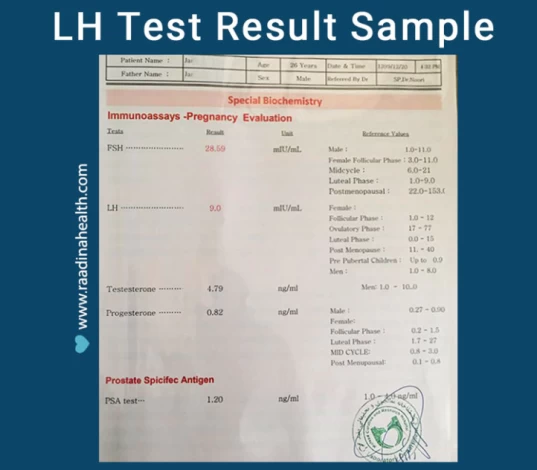
How to Interpret the Results of an LH Test in Men?
Luteinizing hormone in males prompts the testes to produce testosterone, which is essential for sperm production. The male hormone testosterone contributes to the development of secondary sex characteristics such as deepening of the voice, growth of pubic hair and facial hair, and increased muscle mass.
High levels of LH in males may indicate:
- Testicular dysfunction to chemotherapy and radiation therapy;
- Infections;
- Alcohol abuse;
- Klinefelter syndrome (a genetic disorder that affects male sexual development);
- Adrenal gland disorders;
- Aging (LH levels naturally increase with age in men);
- Certain medications or drugs, such as opioids or anabolic steroids;
- Past viral infections such as mumps.
Low levels of LH hormone in men are a sign of the following symptoms:
- Hypogonadism (low testosterone levels);
- Sexual dysfunction;
- Decreased libido;
- Fatigue.

How to Interpret the Results of an LH Test in Children?
LH levels in children are different from those in adults, as they are still in the process of developing their reproductive system. In children, high levels of luteinizing hormone, along with high levels of follicle-stimulating hormone, may indicate precocious (early) puberty (before age 9 in girls and before age 10 in boys). This condition is associated with congenital and acquired structural changes in the central nervous system.
Low LH levels in children can indicate:
- Delayed puberty;
- Ovarian or testicular disorders;
- Turner syndrome (TS) in girls or Klinefelter syndrome in boys;
- Infections;
- Hormone deficiency;
- Nutritional disorders.
Why is the Luteinizing Hormone Test Done?
The LH test is a valuable diagnostic tool used to measure the level of luteinizing hormone. It helps diagnose and evaluate the following:
Fertility problems: LH test shows whether there is a problem with sperm count or if there are not enough eggs in the ovaries;
Ovulation time: women can determine their ovulation days by measuring the LH level in their blood. Women have high doses of LH in their blood just before their ovulation. They can use home urine kits to check their LH level.
Menopause: if your LH level is far above the normal range, you are entering the menopause phase.
Irregular or absent periods: if the LH level in your blood is abnormal, you may miss a period or have irregular menstruation.
Early or late puberty: this test can show whether a child has early or late puberty. If teenagers have low LH, they have late puberty, and if they have high LH, their puberty has started early.
Pituitary gland problems: LH hormone is produced by the pituitary gland, so if the LH level is out of normal range, there might be a problem with this gland.
Low testosterone: men with low testosterone usually have low libido, erectile dysfunction, patchy beard, low muscle mass, and extra weight. However, none of these symptoms can confirm low testosterone levels. Only an LH test can diagnose abnormal testosterone levels.
What Complementary Tests Are Done Along with the Luteinizing Hormone Test?
In some cases, additional complementary tests may be prescribed to confirm the LH test results more thoroughly. These tests may include:
- Follicle-stimulating hormone (FSH) test: to assess the function of the pituitary gland and its impact on fertility;
- Progesterone Test: to evaluate female fertility;
- AMH test: to measure the ovarian reserve;
- Prolactin test: to diagnose pregnancy;
- Testosterone test: to investigate sexual problems in both men and women, irregular periods in women, and testicular tumours in men;
- Androstenedione Test: to investigate premature puberty in boys and the development of secondary sex characteristics in women;
- Semen analysis: to evaluate the morphology and motility of sperm;
- SHBG test: to measure testosterone levels in both men and women.

Final Word
LH plays a crucial role in females' ovulation and testosterone production in males. LH levels can be measured through a blood test or urine test. LH normal levels may vary depending on age, sex, and reproductive stage.
In females, LH levels rise and fall during the menstrual cycle, with a surge in LH triggering ovulation. In males, LH stimulates the Leydig cells in the testicles to produce testosterone.
Disorders affecting the hypothalamus, pituitary, ovaries, or testicles can cause the production of too much or too little LH, leading to infertility and other health problems.
FAQs about Luteinizing Hormone Test
What happens if LH is too high in females?
In women, LH levels fluctuate on different days of the month. If a week has passed from your menstrual cycle and your LH is high, you are ovulating, and that’s normal. But if two or three weeks have passed from your period and your LH is still high, it means that either your ovaries aren’t working normally or there is a problem with your pituitary gland.
When should you take the LH test?
You need to take the LH test if you have been trying to get pregnant for a year but didn’t succeed, have irregular periods, or have symptoms of early menopause. The LH test is usually done between days 12 and 16 of the menstrual cycle.
How can I increase my LH levels?
Increase the level of your LH by taking hormonal medications, dietary supplements, and foods that help your body produce LH.
What foods increase luteinizing hormone?
Some foods such as chia seed, flaxseed, almond, avocado, sweet potato, carrot, leafy vegetables, oyster, and salmon regulate your LH hormone.
Is the abnormal level of LH profound?
Abnormal levels of LH can be a sign of problems in the pituitary gland, hypothalamus, or reproductive glands.
What does low LH mean in females?
Low LH in females means the hormone level is below the expected range for the menstrual cycle phase. This can affect ovulation and may indicate issues like hypothalamic dysfunction, pituitary problems, or hormonal imbalance.
What is the normal LH level in females?
Normal LH levels depend on the menstrual cycle phase. Typical ranges are 1.9–12.5 mIU/mL in the follicular phase, 8.7–76.3 mIU/mL during ovulation, and 0.5–16.9 mIU/mL in the luteal phase.
What does high LH mean in females?
High LH in females usually suggests conditions such as PCOS, ovarian insufficiency, or menopause-related changes. Elevated LH may disrupt normal ovulation and affect fertility.






No reviews
Your comment